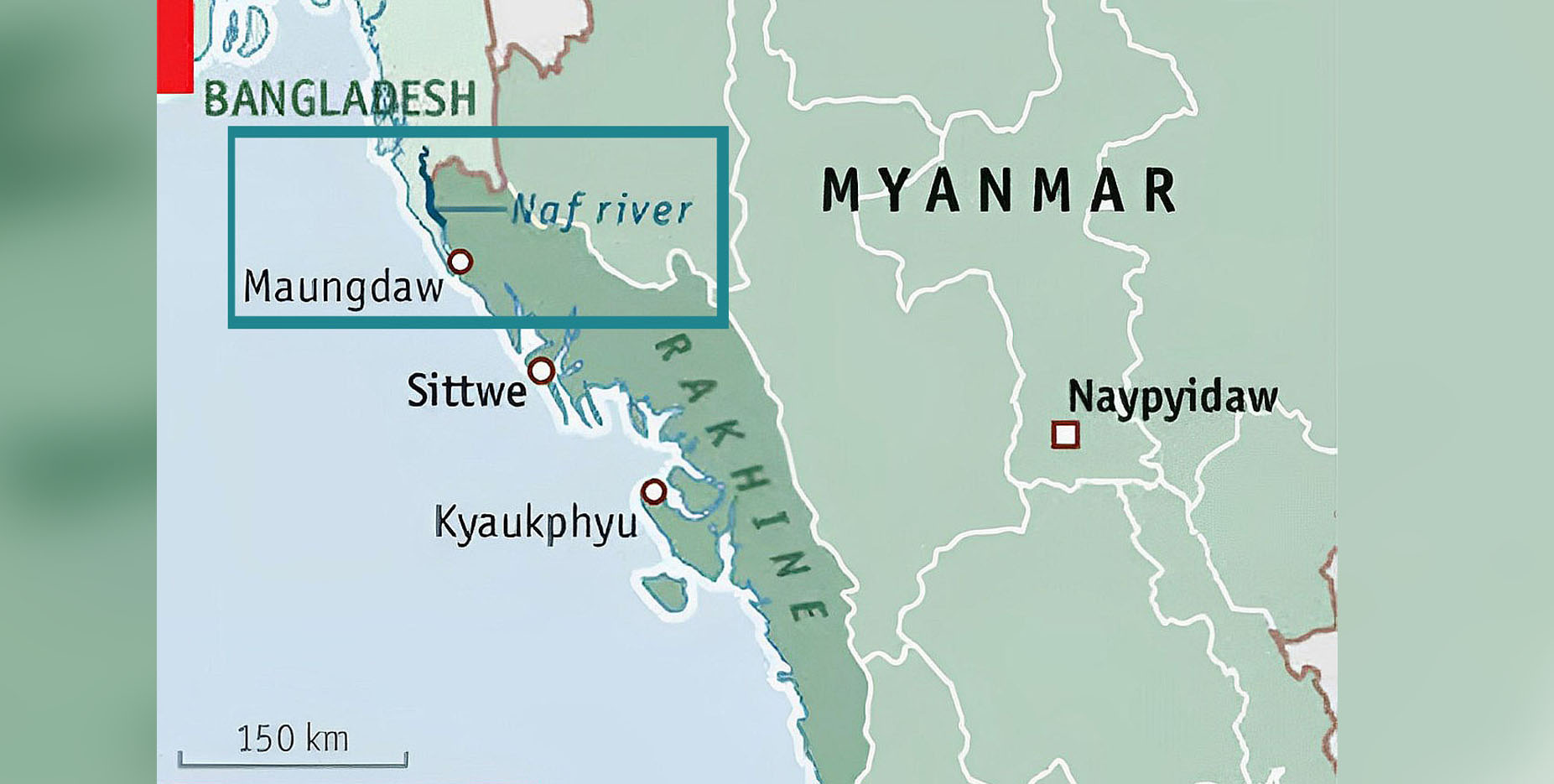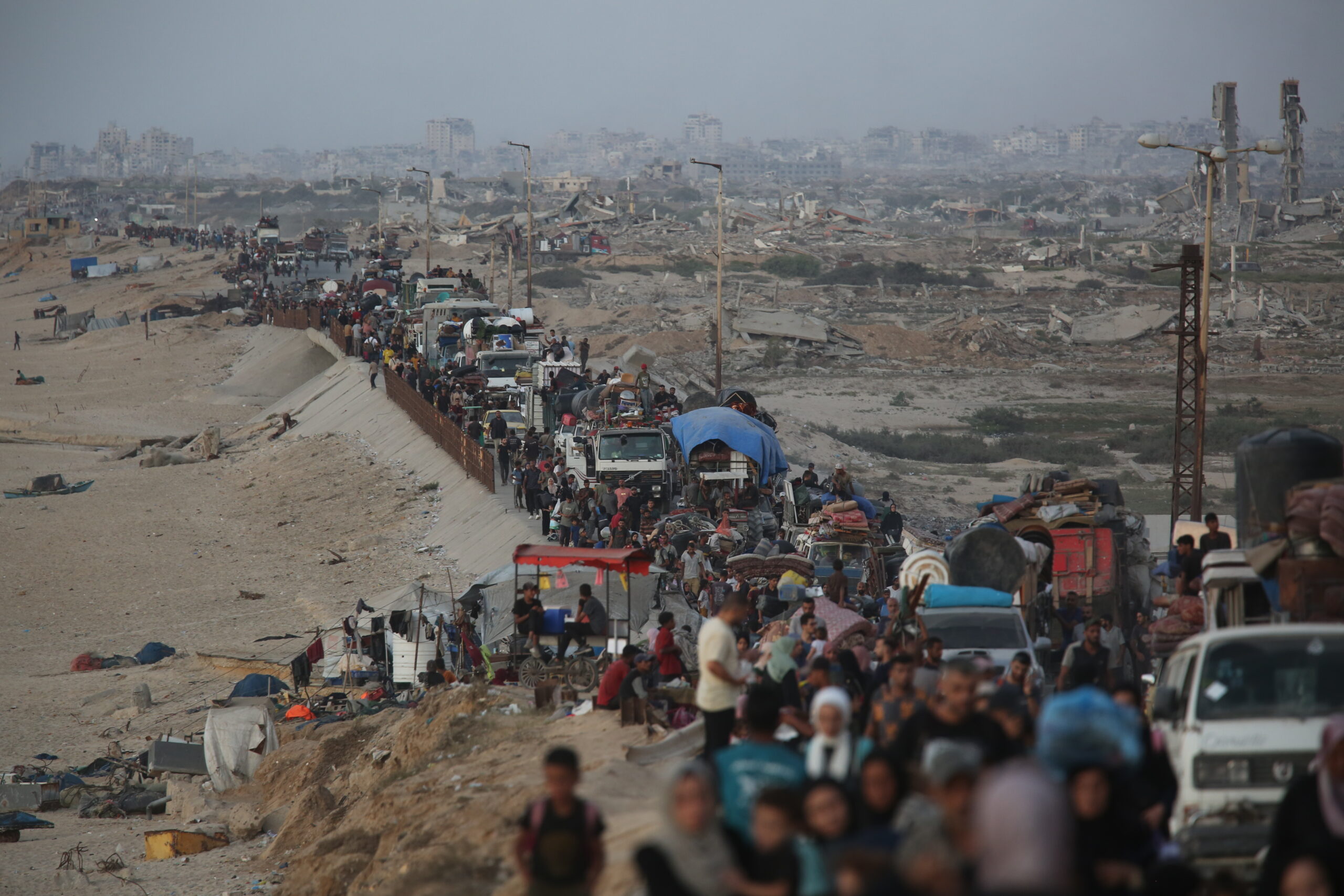
Nadine Osman
More than 200 Rohingya Muslims were tragically killed in drone and artillery attacks launched by the Arakan Army in Maungdaw township, Rakhine State, Myanmar, near the Naf River along the Bangladesh border on August 5. The victims, predominantly women and children, were attempting to flee escalating attacks by the Arakan Army and the Burmese military by crossing into Bangladesh.
Eyewitnesses have confirmed that the drones and artillery used in the assault were launched from Arakan Army-controlled areas. This incident forms part of a broader pattern of drone strikes by the Arakan Army targeting Maungdaw and neighbouring Rohingya villages, resulting in daily civilian casualties.
Ground reports indicate that Rohingya civilians are being systematically targeted by both the Arakan Army and the Myanmar military. These civilians are not only enduring atrocities but are also being indiscriminately caught in the crossfire of the ongoing conflict, the statement adds.
Around 630,000 Rohingya remain in Myanmar, living under an apartheid-like system that leaves them extremely vulnerable to renewed violence. “Rohingya in Rakhine State are enduring abuses tragically reminiscent of the military’s atrocities in 2017,” said Elaine Pearson, Asia Director at Human Rights Watch. “Once again, armed forces are driving thousands of Rohingya from their homes with killings and arson, leaving them nowhere safe to turn.”
Since the resumption of hostilities in November 2023, which ended a year-long informal ceasefire, the Rohingya have been caught in the middle of the conflict. As the Arakan Army rapidly expanded its control throughout Rakhine State, the military retaliated with indiscriminate attacks on civilians, using helicopter gunships, artillery, and ground forces. In late April, Arakan Army forces started assaulting Rohingya villages in Buthidaung, ultimately taking control of the town on May 17, during which they shelled, looted, and burned Rohingya neighbourhoods.
The fighting has since moved westward to Maungdaw, resulting in further violence and displacement, including arson and looting. Four videos from the August 5 attacks shared on X, on August 6, depict dozens of bodies, including men, women, and children. Rohingya witnesses hold that the Arakan Army was responsible, while the junta and Arakan Army have blamed each other for the attacks.
“Over the last two months, there was serious fighting between the Arakan Army and Myanmar military, with artillery shells and drones,” said a 24-year-old Rohingya man from Myo Ma Ka Nyin Tan, Maungdaw, in August. “Many Rohingya villagers were killed and injured every day. I went to several funerals.”
He fled on August 5 when fighting descended on his neighbourhood. “We made our way to the riverbank to cross, where thousands of people were making the journey. Suddenly, drones appeared and started dropping bombs on the crowd. In our group of 70 to 80, close to 20 were killed, and 10 others, including myself, were injured.”
“The Naf River was full of dead Rohingya bodies as we fled,” said another villager, 18, who told Human Rights Watch that his father was killed in a drone attack. “I saw many dead bodies in the paddy fields and on the riverbank.” His boat capsized in the river while crossing into Bangladesh, drowning two dozen people. He and his brother found a plastic barrel which they floated on to the shore. The Border Guard Bangladesh arrested his mother while she attempted to cross the border and have detained her since, he said. Border guards have increased pushbacks of asylum seekers along the Rakhine border since January.
A spokesperson for the United Nations High Commission for Refugees said the agency was aware of the deaths of refugees from the capsize of two boats in the Bay of Bengal and it had heard reports of civilian deaths in Maungdaw but that it could not confirm the numbers or circumstances.
A map of the Naf River in Maungdaw township, Rakhine State, Myanmar, located along the Bangladesh border, where over 200 Rohingya Muslims were killed in drone strikes by the Arakan Army on August 5. (Credit: WikiCommons)


